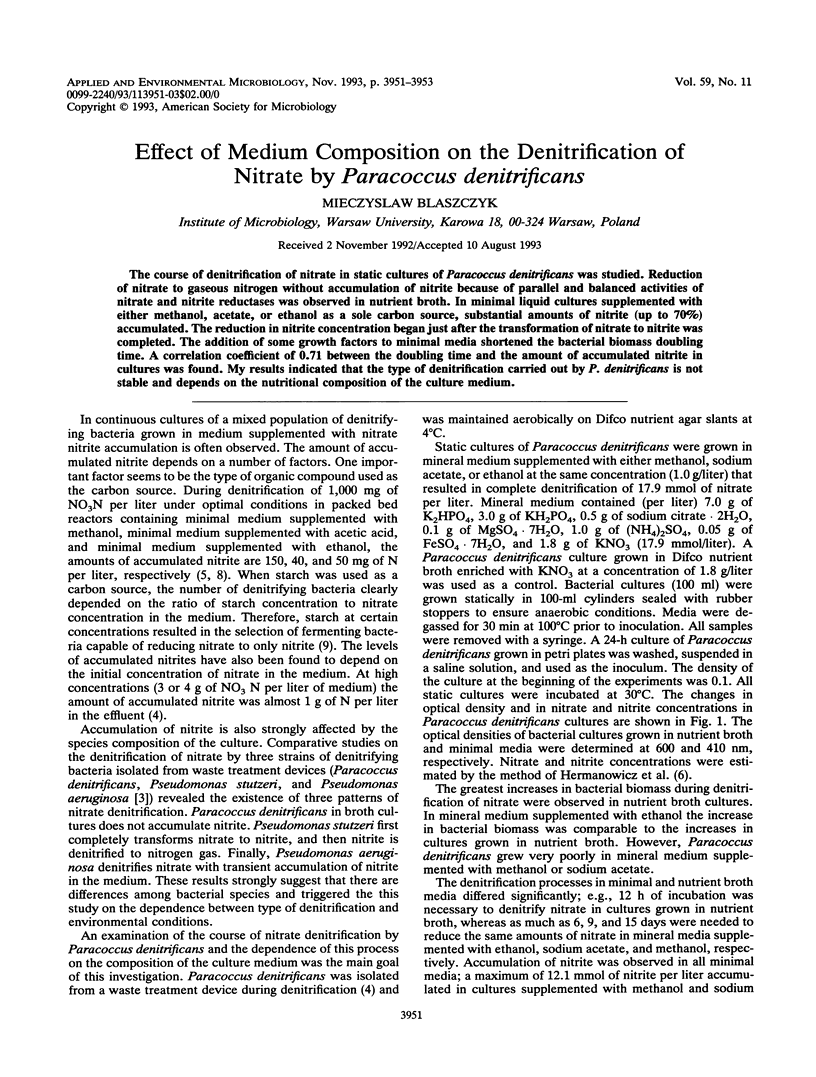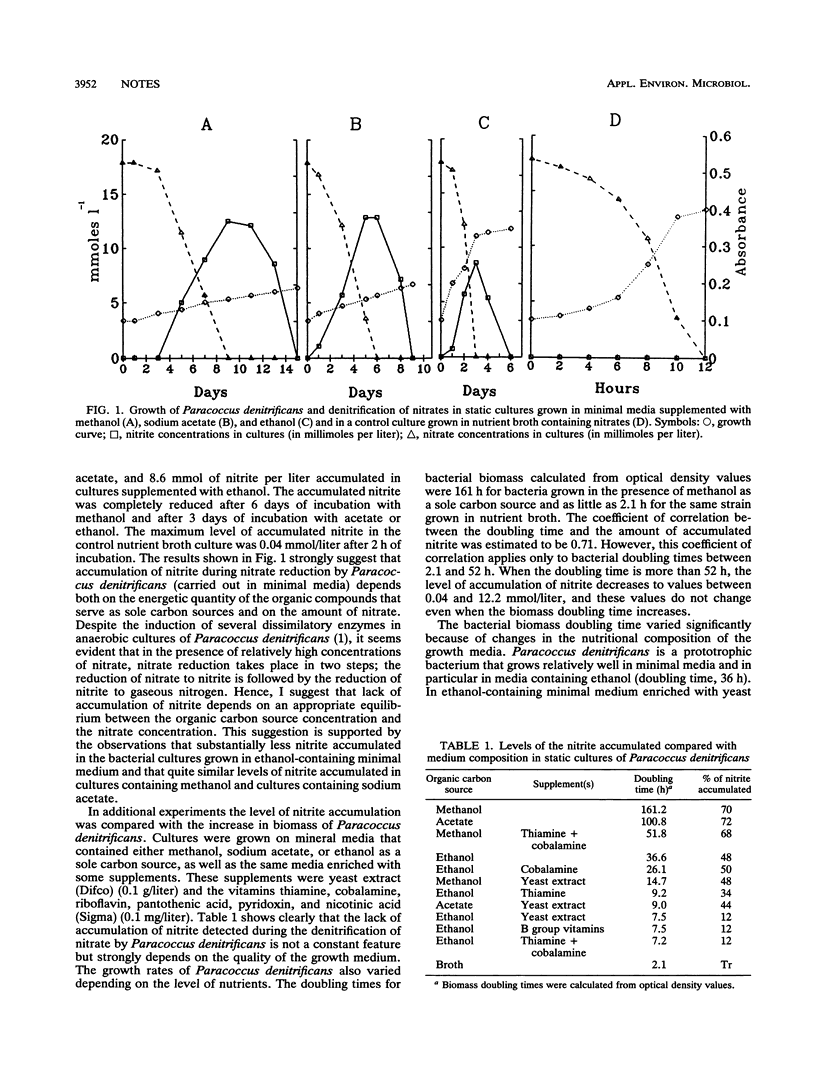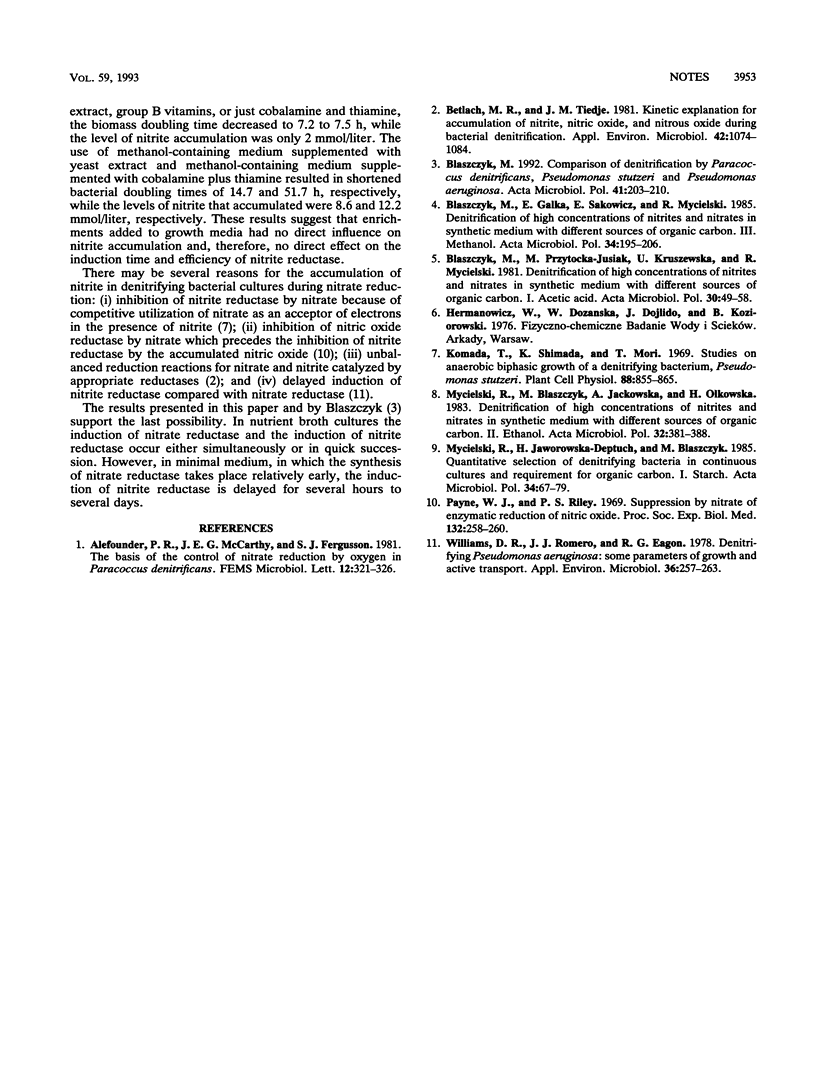Abstract
The course of denitrification of nitrate in static cultures of Paracoccus denitrificans was studied. Reduction of nitrate to gaseous nitrogen without accumulation of nitrite because of parallel and balanced activities of nitrate and nitrite reductases was observed in nutrient broth. In minimal liquid cultures supplemented with either methanol, acetate, or ethanol as a sole carbon source, substantial amounts of nitrite (up to 70%) accumulated. The reduction in nitrite concentration began just after the transformation of nitrate to nitrite was completed. The addition of some growth factors to minimal media shortened the bacterial biomass doubling time. A correlation coefficient of 0.71 between the doubling time and the amount of accumulated nitrite in cultures was found. My results indicated that the type of denitrification carried out by P. denitrificans is not stable and depends on the nutritional composition of the culture medium.
Full text
PDF


Selected References
These references are in PubMed. This may not be the complete list of references from this article.
- Betlach M. R., Tiedje J. M. Kinetic explanation for accumulation of nitrite, nitric oxide, and nitrous oxide during bacterial denitrification. Appl Environ Microbiol. 1981 Dec;42(6):1074–1084. doi: 10.1128/aem.42.6.1074-1084.1981. [DOI] [PMC free article] [PubMed] [Google Scholar]
- Błaszczyk M. Comparison of dentrification by Paracoccus denitrificans, Pseudomonas stutzeri and Pseudomonas aeruginosa. Acta Microbiol Pol. 1992;41(3-4):203–210. [PubMed] [Google Scholar]
- Błaszczyk M., Gałka E., Sakowicz E., Mycielski R. Denitrification of high concentrations of nitrites and nitrates in synthetic medium with different sources of organic carbon. III. Methanol. Acta Microbiol Pol. 1985;34(2):195–205. [PubMed] [Google Scholar]
- Błaszczyk M., Przytocka-Jusiak M., Kruszewska U., Mycielski R. Denitrification of high concentrations of nitrites and nitrates in synthetic medium with different sources of organic carbon. I. Acetic acid. Acta Microbiol Pol. 1981;30(1):49–58. [PubMed] [Google Scholar]
- Mycielski R., Blaszczyk M., Jackowska A., Olkowska H. Denitrification of high concentrations of nitrites and nitrates in synthetic medium with different sources of organic carbon. II. Ethanol. Acta Microbiol Pol. 1983;32(4):381–388. [PubMed] [Google Scholar]
- Mycielski R., Jaworowska-Deptuch H., Błaszczyk M. Quantitative selection of denitrifying bacteria in continuous cultures and requirement for organic carbon. I. Starch. Acta Microbiol Pol. 1985;34(1):67–79. [PubMed] [Google Scholar]
- Payne W. J., Riley P. S. Suppression by nitrate of enzymatic reduction of nitric oxide. Proc Soc Exp Biol Med. 1969 Oct;132(1):258–260. doi: 10.3181/00379727-132-34192. [DOI] [PubMed] [Google Scholar]
- Williams D. R., Rowe J. J., Romero P., Eagon R. G. Denitrifying Pseudomonas aeruginosa: some parameters of growth and active transport. Appl Environ Microbiol. 1978 Aug;36(2):257–263. doi: 10.1128/aem.36.2.257-263.1978. [DOI] [PMC free article] [PubMed] [Google Scholar]


